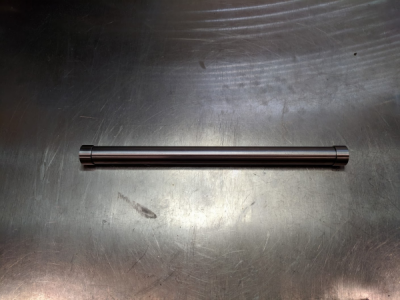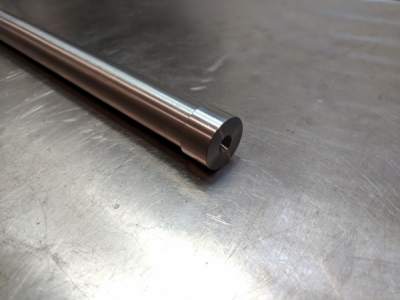Hey Bob! I am in the process of making a new test bar by the method you described. I have made the bar with the plugs inserted. I have drilled the centers. I am uncertain about this:
"Clean and lubricate the test bar centers with oil and mount the test bar between centers, snug, but so it can still be rotated against the centers with little effort. Lock the tail stock spindle. Now, get a good, sharp!, turning tool and take a light but real cut on the plug O.D. at the tail stock end, doing a really nice job of it. "
Do you really mean to not use a drive dog for this operation? I am not sure the bar will drive properly with just a friction fit? I think a drive dog would be necessary. Alternatively, I may try it with one end in the 3 jaw and the other on a center. The error from the 3 jaw will be much reduced by the bar length and I feel like this would give an acceptable result with no taper on the collar.
In fact, you could calculate the taper. Assume a .003" TIR for my Bison chuck. My bar is 10" long and the collar is 1/2". If I measure in the middle of the collar (1/4") from the end, then .003 / 40 = .000075" TIR for the collar. I can't measure that.
Robert


